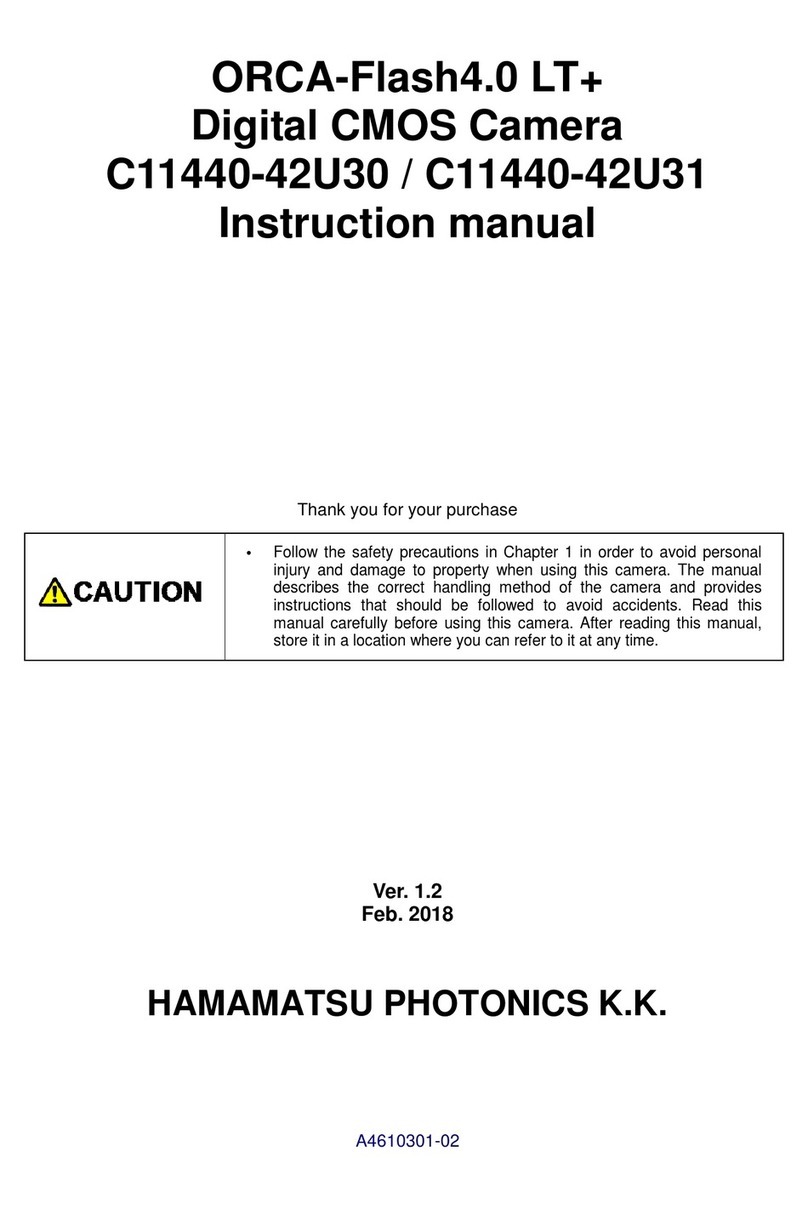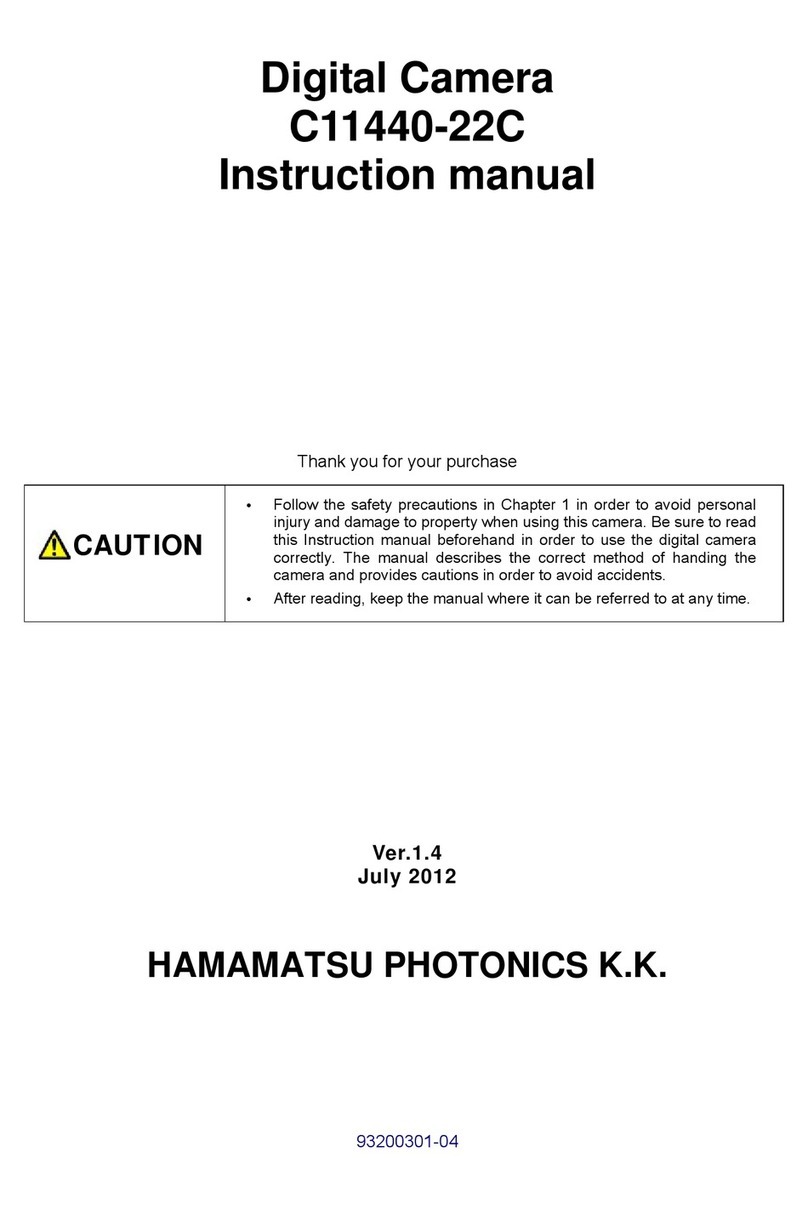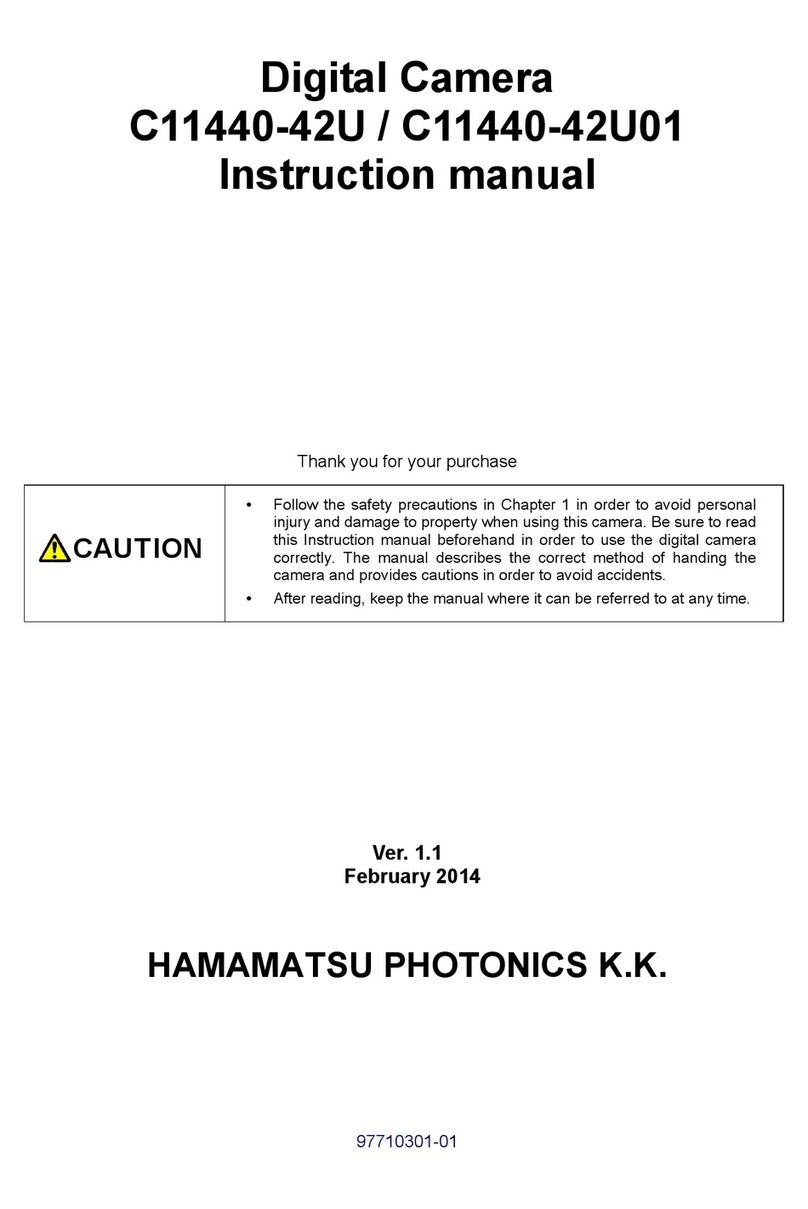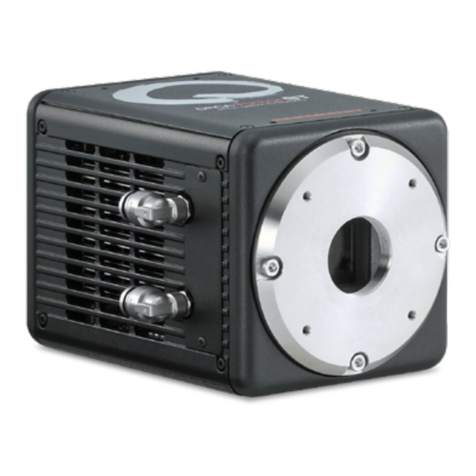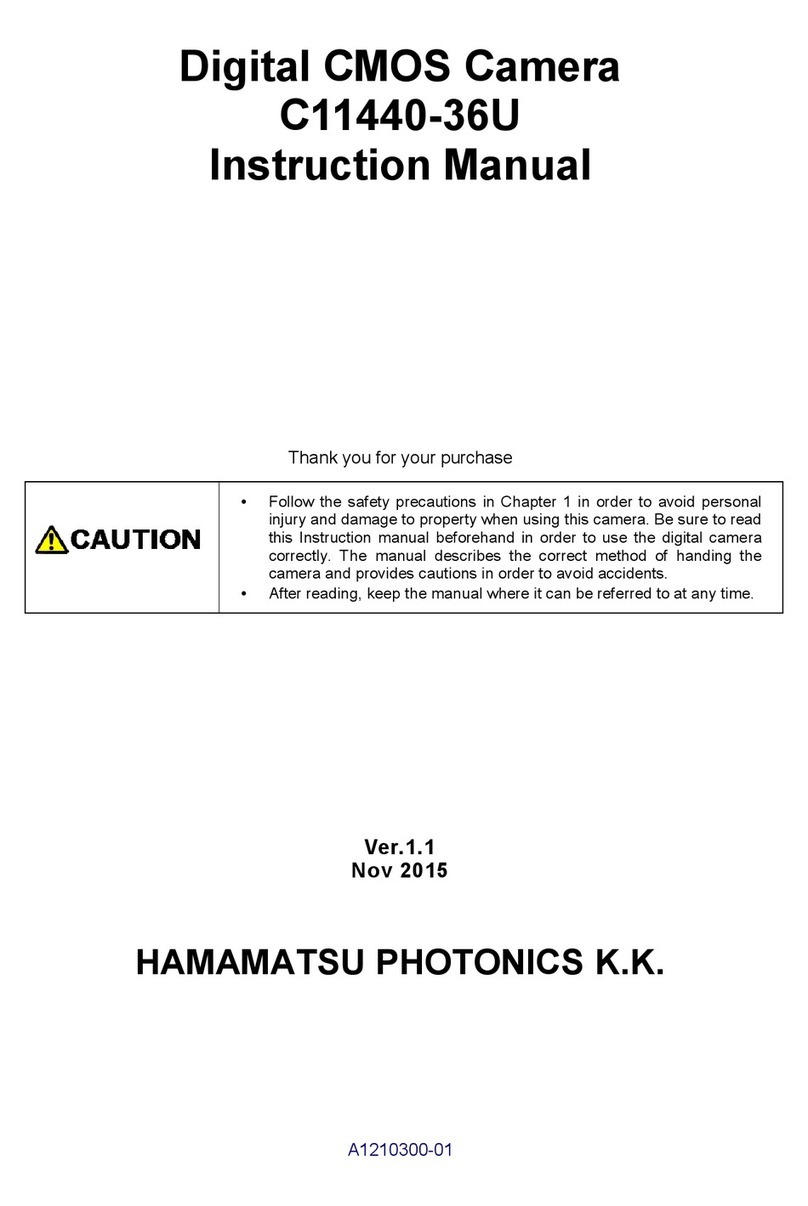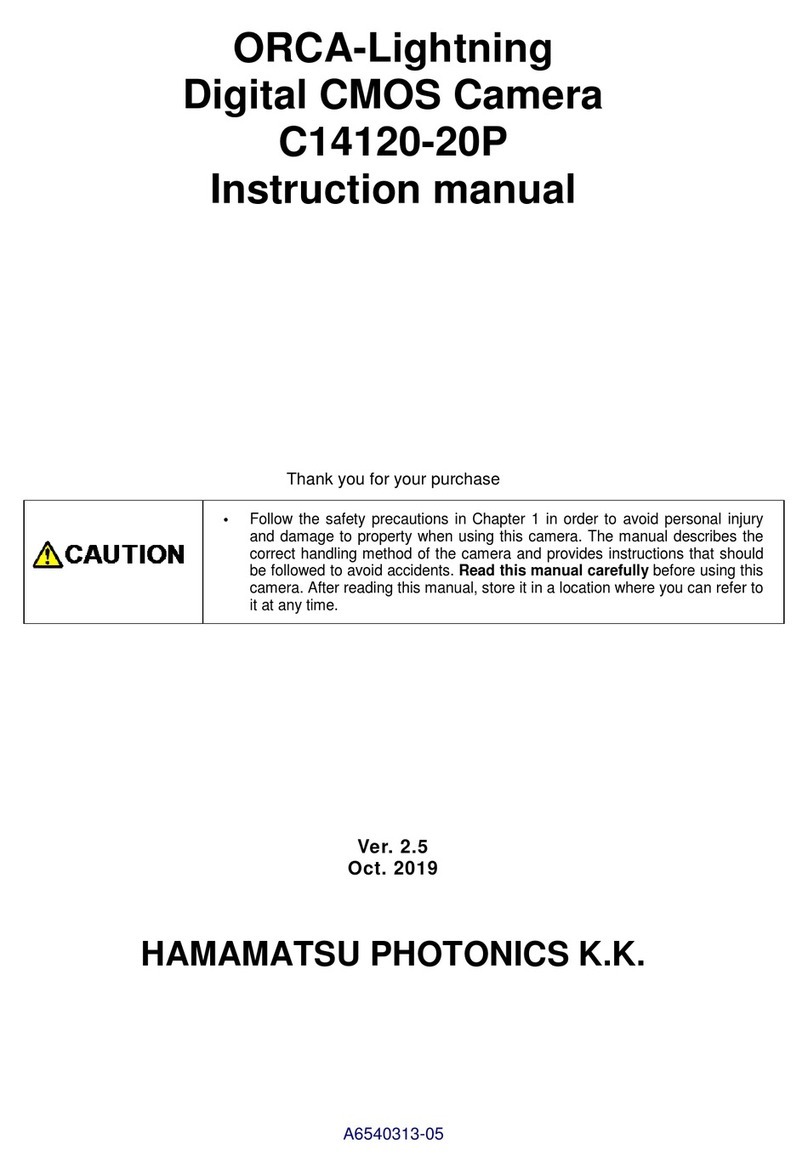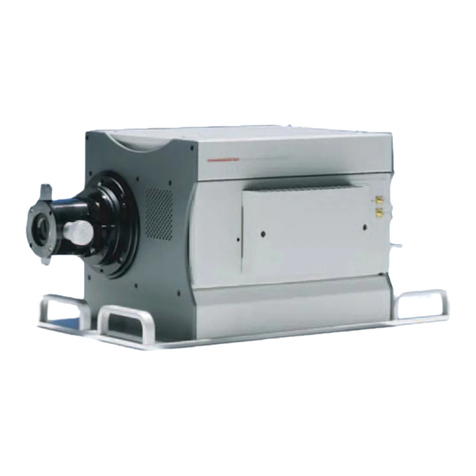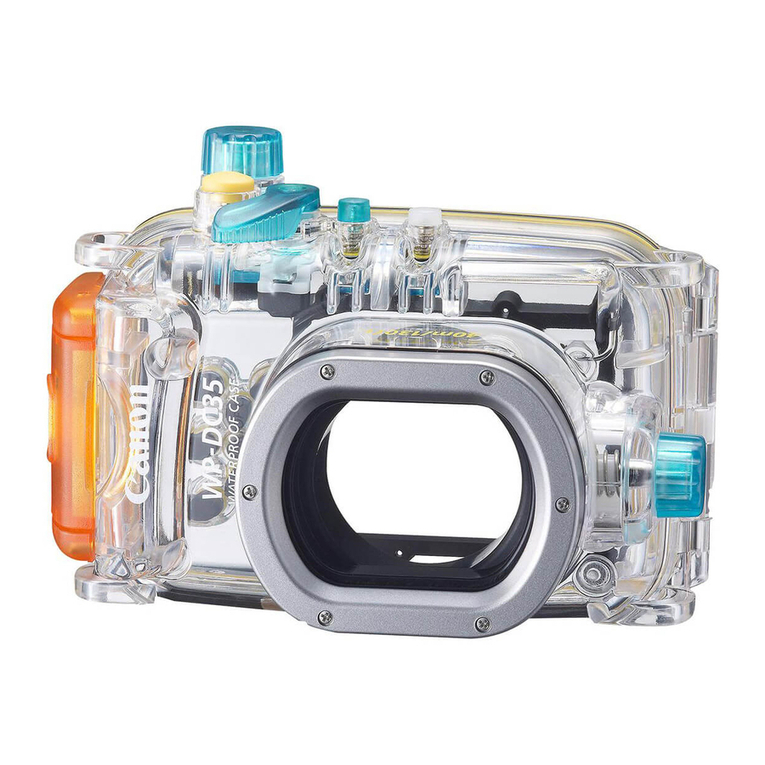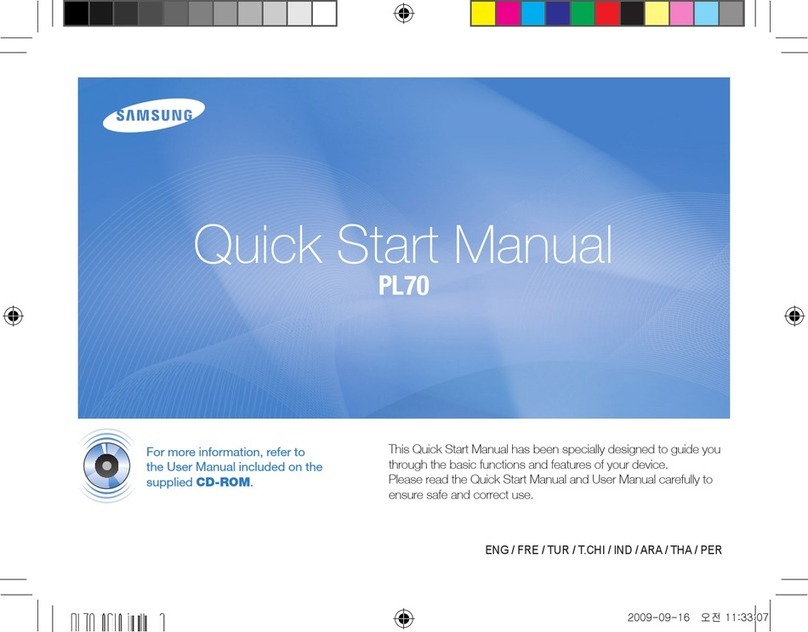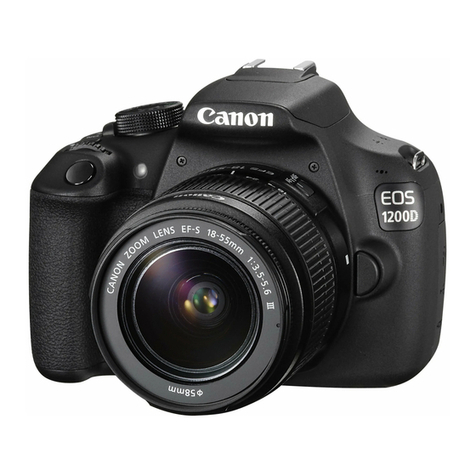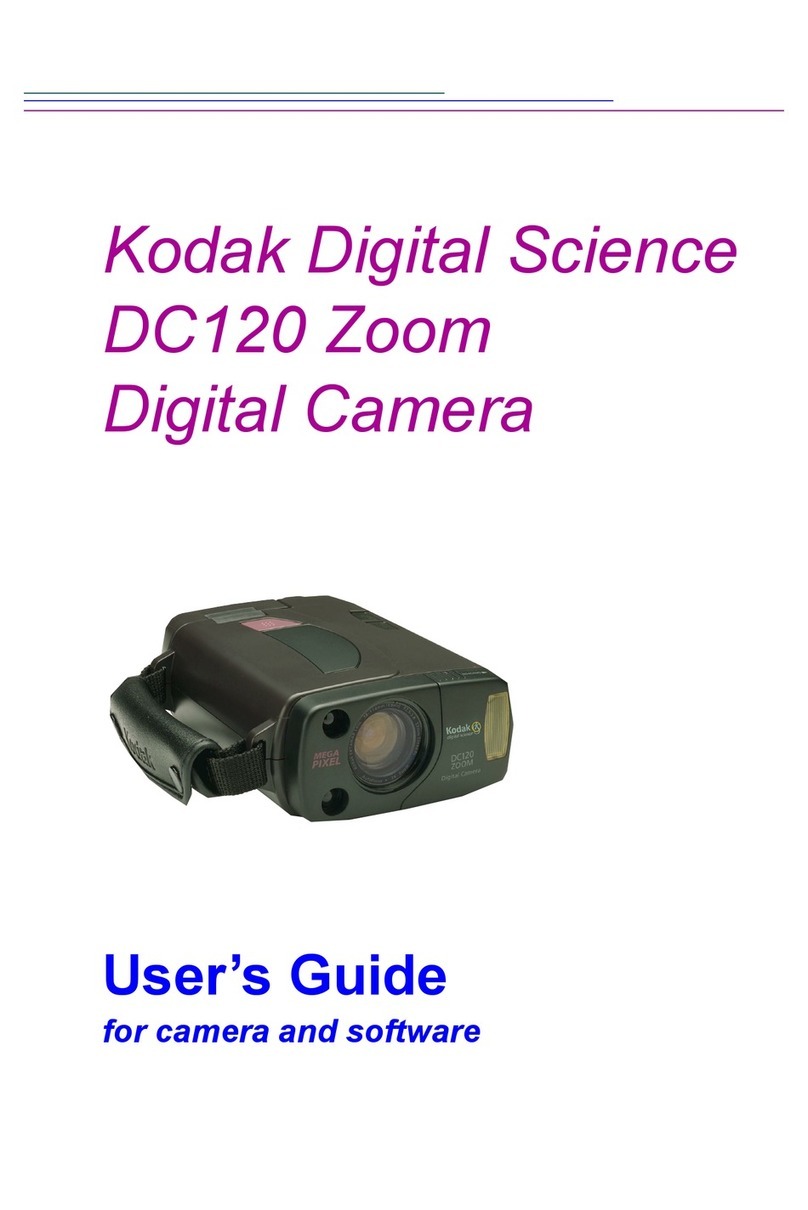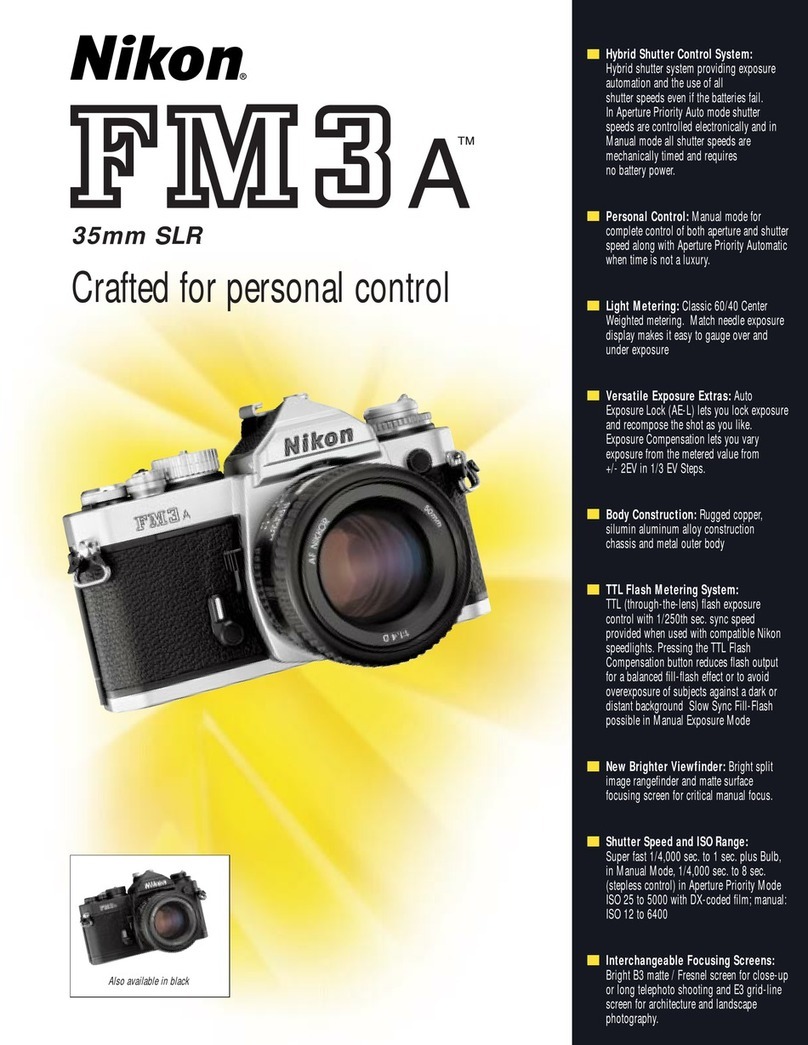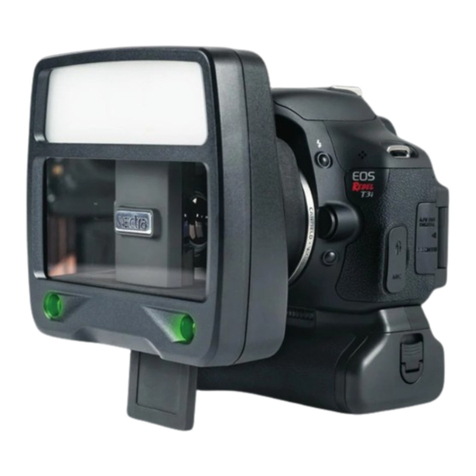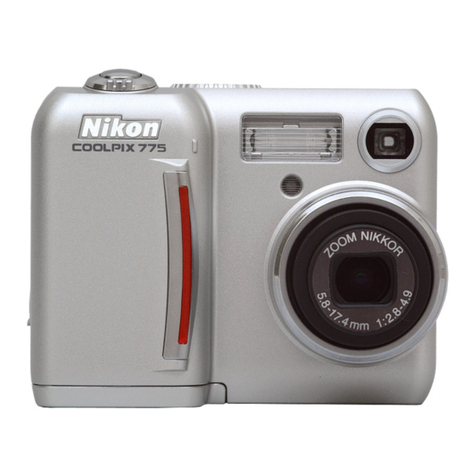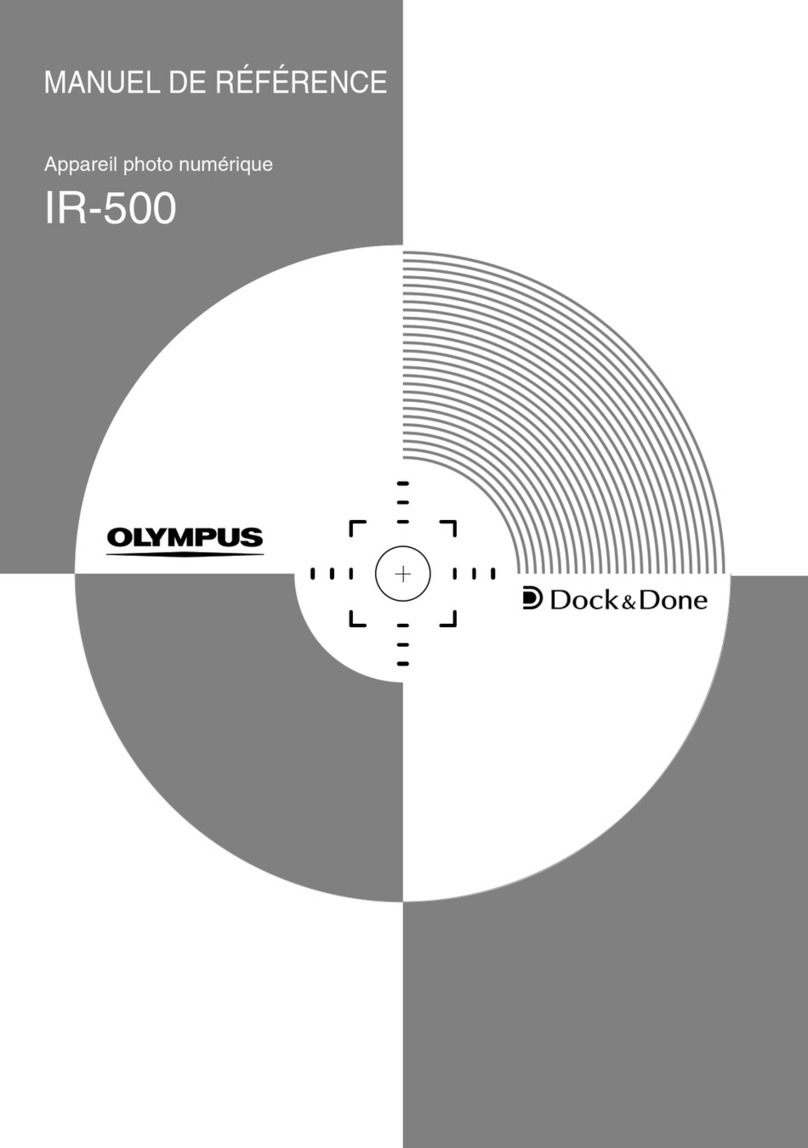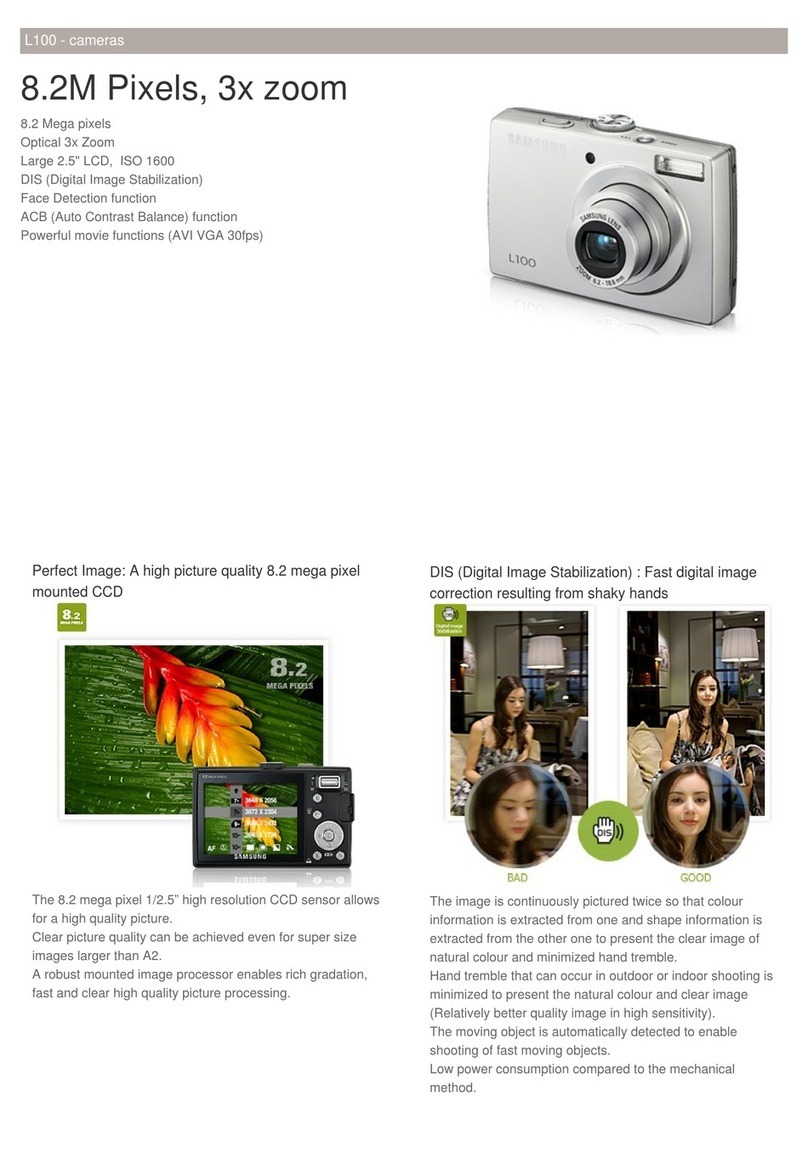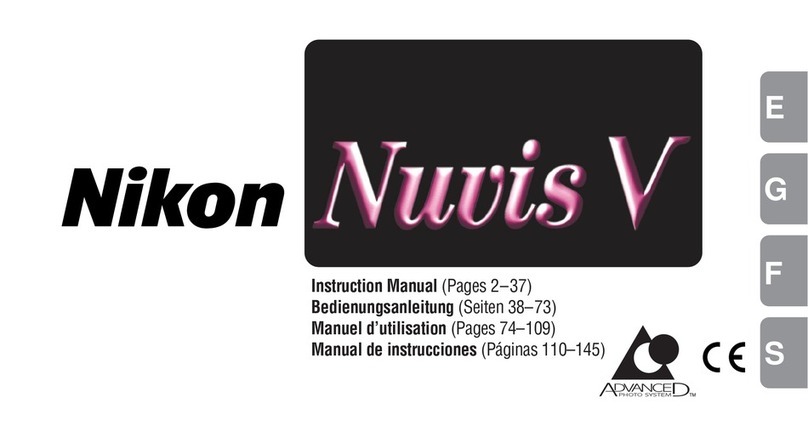
C11440-10C Ver.1.2
5. FEATURES
(1) Readout noise
In the camera, the pixel amplifier is optimized: it has high gain from optimizing the
semiconductor process, and the difference among pixel amplifiers is greatly minimized.
In addition, there is the on-chip CDS (correlated double sampling) circuit, which plays
an important role in achieving low noise. Moreover, the data of one horizontal line is
read by the on-chip column amplifier andA/D in parallel and simultaneously.As a result,
it achieves very fast readout speed while keeping very good low-noise performance.
The camera has lower readout noise (3 electrons r.m.s.) than the conventional cooled
CCD camera. Moreover, high-speed readout (45 frame/s with 1920 pixels × 1440
pixels) with very low readout noise, which was impossible, can now be achieved.
(2) Cooling structure
In the camera, the FL-280 is cooled down by the peltier element to suppress the dark
current. If FL-280 is exposed to the atmosphere, condensation of the moisture from the
air might occur. The camera has a special hermetic chamber structure to isolate the
sensor from the atmosphere, and the chamber is filled with nitrogen gas.
(3) Pixel number and pixel size
The FL-280 equipped in the camera has 3.63 µm x 3.63 µm pixel size that is about half
of the conventional CCD image sensor (2/3 inch, 1.3 megapixels). When using the
camera with a microscope, the number of photons coming to one pixel can be made
equal to the conventional CCD image sensor (2/3 inch, 1.3 megapixels) if 0.5x relay
lens is used. Also, the camera can observe a wider field of view because the pixel
number is about 2 times that of the conventional CCD image sensor (2/3 inch, 1.3
megapixels)
(4) Readout method
The camera has a variety of readout modes. In addition to full resolution readout mode,
sub-array readout and binning readout are supported.
(5) Frame rate (readout speed)
The FL-280 realizes both low noise (3 electrons r.m.s.) and high speed readout (45
frame/s with 1920 pixels x 1440 pixels) simultaneously, owing to 1 line parallel
simultaneous readout using columnA/D.
(6) Real-time correction functions
When using the camera, there is a chance that shading caused by uneven illumination
and optics is not negligible in the image. Also, there are a few pixels in FL-280 that
have slightly higher readout noise performance compared with surrounding pixels.
Therefore, the camera has real-time offset level, shading and defective pixel correction
features to further improve image quality. The correction is performed in real-time
without scarifying the readout speed at all.
(7) CameraLink interface
The camera realizes 45 frames/s high-speed data transfer for 2.8 megapixels by using
the CameraLink interface. Data is output with 75 MHz x 2 tap (12 bits) that follows the
Base Configuration standard of CameraLink interface, and images can be transferred
into a personal computer by using a CameraLink interface board available in the
market.
8
